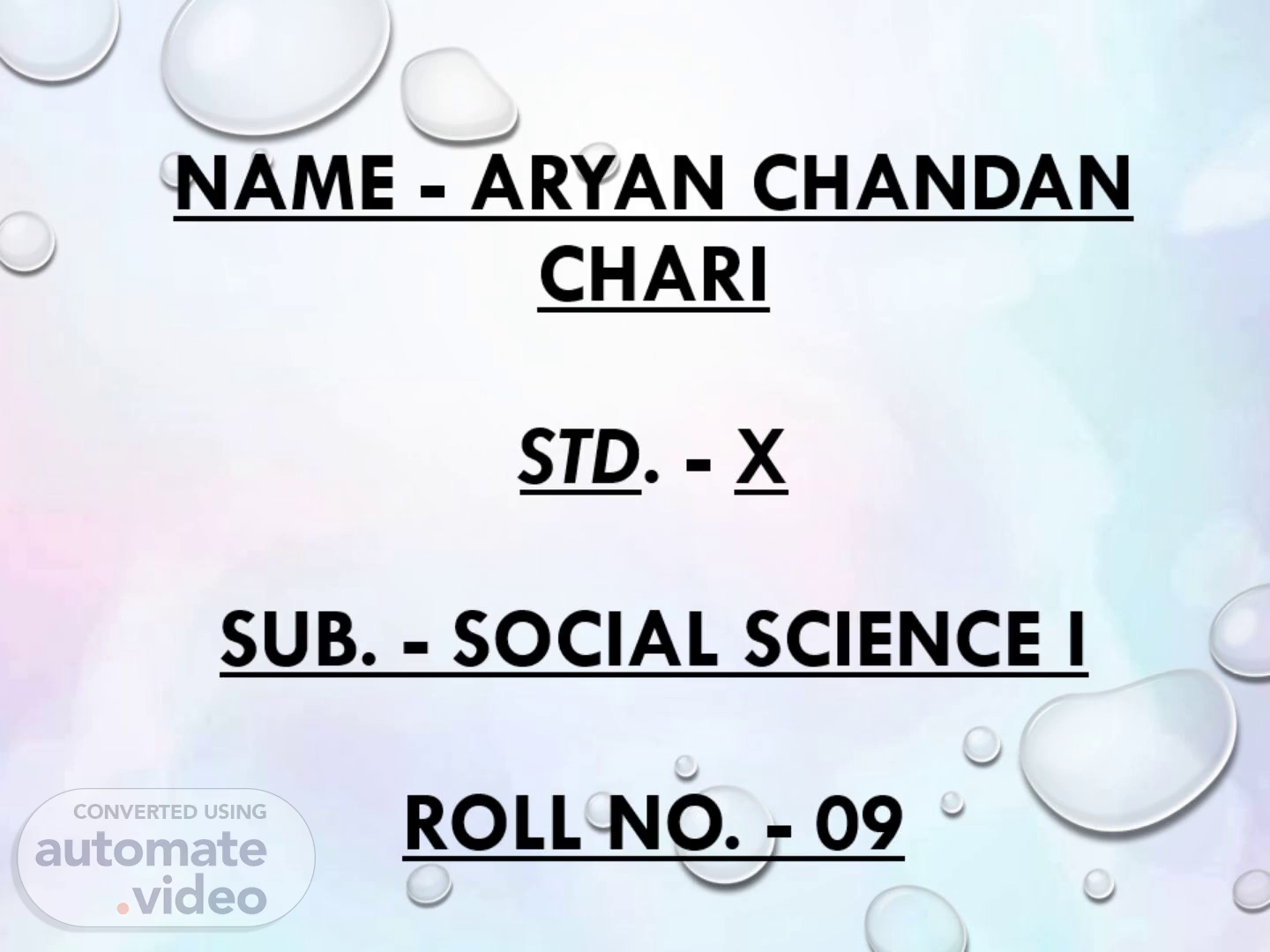
Name - Aryan Chandan Chari Std. - X Sub. - Social Science I Roll No. - 09
Scene 1 (0s)
Name - Aryan Chandan Chari Std. - X Sub. - Social Science I Roll No. - 09.
Scene 2 (7s)
Ghodemodni – Festival Dance in Goa. Chode rnodni This is o dooce form which re enocts ancient legends and stories bravery..
Scene 3 (17s)
ghode Modini - Introduction It is one of the most popular folk dances of Goa. Viewing this dance form will teleport you into the world of great warriors of the past. The dancers tuck dummy horses around their waists and carry swords in their hands which is a symbol of bravery and swing around in the background music of Dhol. The word ghode translates to horses and modni translate to dance, coming together to make up the name of the folk dance, and symbolising the journey of the victorious warriors.
Scene 4 (40s)
Introduction About Folk Dance and Music of Goa Dancing and singing and Merrymaking Traditions! Folk dance and Music is the lifeline of Goan People and it is an integral part of Goa culture. Be it any occasion or festivity, merrymaking in Goa is incomplete without the soul soothing music and Folk dance. Goa has a rich cultural heritage which is a beautiful amalgamation of eastern and western cultures. Folk dance and Music of Goa makes the cultural tourism of Goa the most interesting one. Portuguese and Israeli’s who ruled Goa influenced the folk dance and music of Goa. Goan people are very passionate people in whatever they do. Their passion for dance and music is such that some of the festivals which are celebrated in Goa are solely dedicated to dance and music, to promote the culture tourism worldwide..
Scene 6 (1m 20s)
Description Ghode Modini Costume As a prop, a wooden horse is used. Horses are well decorated with colorful clothes and their heads with colorful flowers. Dancers also wear colorful clothes (Rajput clothes) and Pagdi which Marathas used to wear, along with ghungroo on their ankles. There is also a wooden mask used by dancers. This mask is considered holy and is lifted by members only when they have to dance..
Scene 7 (1m 40s)
Dance Performance Dancers use movements to fake fighting in this dance, swaying swords in a manner of hitting their enemy. They move their bodies on the beat of drums along with the swords. It is said that this dance was brought to Goa by the people of northern India. This is the reason why dancers wear Rajput costumes..
Scene 9 (2m 2s)
History of Dance Festival Ghode Modini originates from Goa and celebrates the triumph of Ranes, the Maratha rulers of the Sattari taluka in Goa, over the Portuguese in Goa. It came to be known as the warrior dance since the Kshatriya dancers dress up in their popular perky attire with a wooden horse tied at their waist and bright headgears. During the performance, the dancers move in horse-like steps, to the sounds of dholaks. You can watch Ghode Mordini during the Shigmo festival in few northern taluks of Goa. Junoon: The Arts and Cultural Club brings to you this unique dance form which needs immediate attention and recognition..
Scene 10 (2m 31s)
Ghode Modini Stories In this dance, warriors are praised when they were in war with the Portuguese. Ghode Modini can also be called dummy dancers with swords. In some parts, it may be known with this name only. For different communities, this dance means different. For some, it represents war which was fought to free their village. Earlier, one of the dancers used to wave a white cloth while standing behind the other dancers. There is no clear knowledge as to why this was done. But in recent performances, this practice has ceased. Dancers march with clothes in their hands, it shows their strength and bravery. Ghode Modini marks the victorious return of Maratha warriors from the war. It is said that if the Ghodemodini dance is performed in the village then thieves will be scared of attacking the village. There are stories told by villagers about how robbers run away from the village after ghodemodini was performed in the village.
Scene 12 (3m 17s)
Interview of Folk Artist Goan traditional festivals are not only for entertainment, but also preserve culture, tradition as well as bring people together. A prime example of this is the famous “Sath Gavachi, Sath Bhavchi Ghodemodni festival at Thane-Sattari. This festival is celebrated every three years. The 14 dancing horses are the main attraction of this festival. It is believed that what one wishes for during this festival generally comes true..
Scene 13 (3m 38s)
And because of this many devotees from different parts of the state visit here after their prayers are fulfilled and offer to God whatever they had promised in case their wishes was fulfilled, as a sign of gratitude. Chor, Romat, Korovolyo, ghodemodni are the different rituals and traditions one can see for this festival.. How the 7 different villages come together and how 7 brothers meet each other during this festival is another beautiful tradition followed here. - Budho Gaonkar (Artist from Thane Sattari).
Scene 14 (4m 1s)
Involvement of Different Sections of Society Ghode Modni is a celebration of culture, community, and tradition. It is a time for people to come together and celebrate the richness and diversity of Goan culture. The festival is a testimony to the spirit of harmony and unity that is an integral part of the Goan way of life. People from all types of background, from all sections of society from Upper caste to Untouchables come together to celebrate this festival. Also they have significant role to play while performing this festival. For example Dhol should be played by Mhar community from that village..
Scene 15 (4m 28s)
[image].